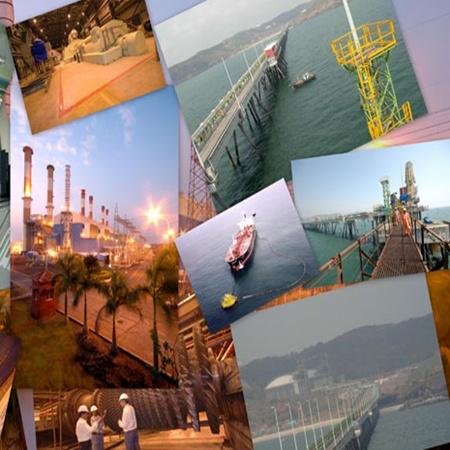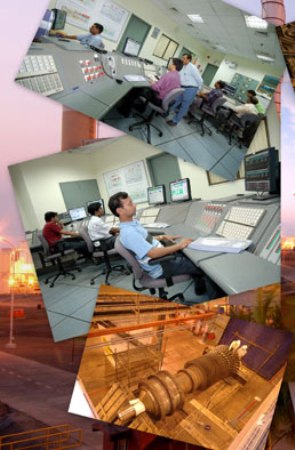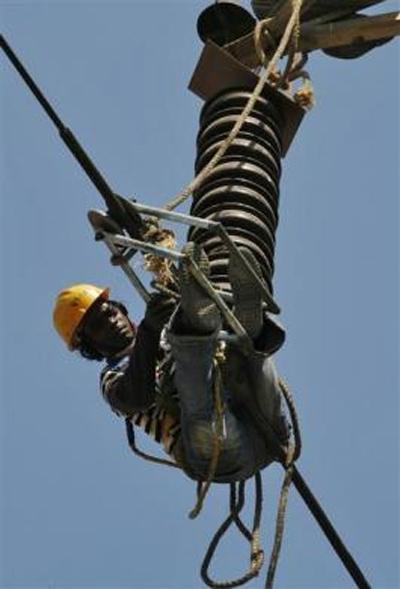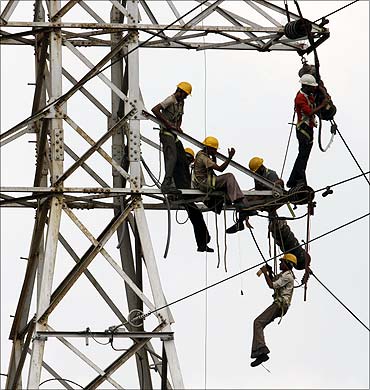 | « Back to article | Print this article |
Eight years after revival, Dabhol struggles to survive
Three-hundred kilometres south of Mumbai, water-locked from three sides, is the beleaguered Dabhol power plant.
Abandoned by the erstwhile Enron Corporation, the plant was taken over by two of the government's largest companies - NTPC Ltd and GAIL - eight years ago.
But the Rs 10,000-crore project located in Anjinwel village on the west coast has always seen things going wrong for it.
Initially, the plant was erroneously named Dabhol after a village across the Vashisthi river in the Ratnagiri district of Maharashtra instead of Anjinwel.
Now, the power plant resembles any other project site of these companies that has a main power plant and a township for its employees. But quite unlike other projects of NTPC and GAIL, Dabhol has faced a series of catastrophic equipment failure and is currently battling thinning gas availability.
Click NEXT to read more...
Eight years after revival, Dabhol struggles to survive
To add to the woes of the operator Ratnagiri Gas and Power Private Ltd (RGPPL), even the commissioning of the adjoining LNG terminal, widely perceived as a potential spinner for the project's finances, is facing technical hurdles.
"This terminal is important for us as a source of revenue until the decreasing gas availability from the KG basin improves," said RGPPL's Deputy Managing Director A K Jana.
The 1,967-megawatt (Mw) power plant is fitted with six gas turbines and requires 9.7 million metric standard cubic metre per day (mmscmd) of gas for functioning. The government has allocated 7.4 mmscmd.
"However, actual availability of gas is less than 3 mmscmd, making it difficult to run at plant at required capacity," said A K Garg, RGPPL's General Manager in-charge at Dabhol plant.
Click NEXT to read more...
Eight years after revival, Dabhol struggles to survive
The ill-fated project was originally erected in the 1990s by the combined effort of the erstwhile US energy giant Enron, General Electric Co. (GE) and Bechtel.
While GE provided the turbines and Bechtel constructed the physical infrastructure, Enron managed the project. Enron filed for bankruptcy in 2001 and the government incorporated RGPPL as a joint venture between NTPC, GAIL and the Maharashtra state government to develop the project.
The plant, which sources gas from Reliance Industries Ltd (RIL)-operated KG Basin, is currently running at less than a third of its total capacity with only two turbines functioning.
Faced with an unanticipated sharp decline in KG-D6 gas production, last year the government ordered a cut in supplies to 25 power plants that had an original allocation of 28.90 mmscmd.
Click NEXT to read more...
Eight years after revival, Dabhol struggles to survive
KG-D6 output fell from 61 mmscmd in March 2010 to around 29 mmscmd last month. Of this, around 12 mmscmd was being supplied to power plants.
The supplies to power plant include those to RGPPL. According to the company, there has been substantial cuts in the gas volumes for the Dabhol plant after November 2011, even as an Empowered Group of Ministers (EGoM) accorded topmost priority to the project in gas allocation.
Power production at the plant increased gradually from 1,683 MUs in 2006-07 to 11,877 MUs in 2010-11. However, generation dipped last fiscal to 11,619 MUs at the back of constrained gas supply.
According to Garg, RGPPL has so far invested Rs 3,800 crore in setting up additional infrastructure for the project since 2005 and there are plans to spend another Rs 650 crore this year.
Click NEXT to read more...
Eight years after revival, Dabhol struggles to survive
With reduced gas availability taking a toll on return on investment, RGPPL has hinged all its hopes on the LNG terminal located two kilometres away from the plant.
But with its breakwater facility nowhere near completion, the company is concerned over capacity utilisation of the terminal, even after it is commissioned in December.
An LNG terminal receives imported natural gas in liquefied form and regasifies it for domestic supply.
Converting natural gas to its state reduces its volume six times, making transport of the gas easier and economical.
Currently, there are two functional LNG terminals in India – Petronet LNG's terminal at Dahej and Shell's terminal at Hazira in Gujarat. In addition, a third terminal at Kochi in Kerala is in advanced stage of commissioning. RGPPL's 5 mtpa LNG terminal will be the fourth and the largest terminal, when commissioned.
Click NEXT to read more...
Eight years after revival, Dabhol struggles to survive
Dabhol's problems go beyond mere constrained gas supply or breakwater facility. RGPPL officials say the difficult geography of the project site has also played its role.
RGPPL would be forced to run the terminal, which is due to be commissioned in December, only for six months between May and October.
This is because RGPPL has been able to build only 700 metres of the 2.3-kilometre long breakwater planned.
Breakwater facility protects gas-loaded ships from the impact of tidal waves. The company's last attempt at commissioning the terminal in April this year failed due to gas leakages.
Officials say that notwithstanding the operational problems, the project turnaround achieved so far has come at the cost of personal sacrifice of executives who restarted the project.
For instance, basic facilities like schooling beyond the 10th standard is not available. The project that has hitherto been handled with kidgloves by the Centre and the Maharashtra government is struggling to survive.






